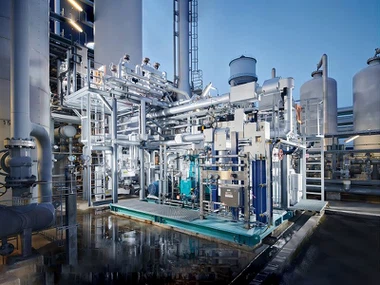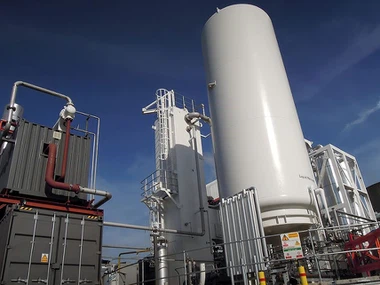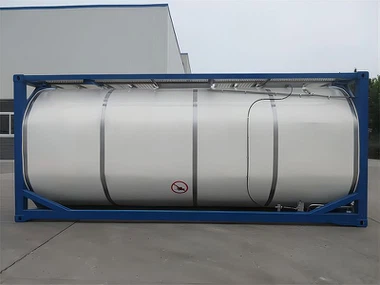
Air Separation Plants
Description
Technical Parameters
●Efficient separation: Cryogenic distillation technology can accurately separate oxygen, nitrogen, argon, etc., with a purity of more than 99.5% (oxygen) and more than 99.999% (nitrogen), meeting multiple needs.
●Flexible adaptation: Covering the full range of 20-80000m³/h (oxygen), supporting gas/liquid output, and can be customized on demand.
●Energy saving and stability: All low-pressure processes + intelligent control to reduce energy consumption, weather-resistant components to ensure long-term continuous operation (1-2 years overhaul).
●Intelligent and easy maintenance: Remote monitoring + fault warning, modular design simplifies maintenance, and core consumables replacement cycle is clear (1-2 years)

What are the core technologies and key components of air separation equipment?

Core technologies
●Cryogenic distillation technology: utilizing the difference in gas boiling points, separating oxygen, nitrogen and argon through distillation towers, and precisely controlling parameters to ensure purity.
●Deep freezing technology: cooling air to liquefaction temperature through refrigeration cycles, providing a low-temperature environment for separation, balancing energy consumption and efficiency.
●Gas purification technology: molecular sieve adsorption + low-temperature adsorption to remove impurities, ensuring clean raw material air and ensuring equipment stability.
●Intelligent control technology: PLC/DCS system real-time monitoring, dynamic optimization of parameters, full-automatic adjustment, and improved stability.
Key components
●Distillation tower: The combination of upper tower + lower tower promotes gas-liquid mass transfer through packing/sieve plate, which is the core of separation.
●Condenser evaporator: Connects the upper and lower towers, drives the distillation cycle, and the heat transfer efficiency affects the separation effect.
●Air compressor: Provides compression power, accounting for 60%-80% of the total energy consumption, and high-efficiency models can reduce energy consumption.
●Molecular sieve purifier: Pre-treats air to remove impurities, and the adsorbent performance determines the subsequent system stability.
●Heat exchanger: Plate-fin structure, recovers cold, cools products, and improves energy utilization.
●Expander: Generates refrigeration to supplement cold loss, and efficiency affects the startup and operation stability of the equipment.

Working principle of air separation unit
Air compression
The outside air is compressed in multiple stages by the air compressor to increase the pressure to about 0.6 - 1.2MPa, which provides power for subsequent separation and facilitates gas cooling and liquefaction.
Impurity removal
The compressed air enters the molecular sieve purifier, and the molecular sieve is used to adsorb impurities such as moisture, carbon dioxide and hydrocarbons to prevent these impurities from freezing and clogging the equipment at low temperatures.
Deep cooling
The pretreated air enters the main heat exchanger, exchanges heat with the low-temperature reflux gas, and is gradually cooled to a temperature close to the liquefaction temperature. Then, it is expanded and refrigerated by the expander to further cool and liquefy the air.
Distillation separation
The liquefied air enters the distillation tower, and the boiling point differences of oxygen, nitrogen and other components (oxygen boiling point - 183℃, nitrogen boiling point - 196℃) are used to perform partial evaporation and partial condensation in the distillation tower multiple times to achieve the separation of oxygen, nitrogen, argon and other gases, and obtain high-purity product gas.
FAQ
1. What is the energy consumption of air separation equipment?
The energy consumption of air separation equipment mainly comes from the raw air compressor, which accounts for the vast majority of the total energy consumption. Advanced equipment reduces energy consumption by optimizing refrigeration cycles and adopting high-efficiency heat exchangers. For example, the full low-pressure process consumes less energy than the high-pressure process. At the same time, intelligent equipment can monitor and optimize energy consumption in real time, effectively control the product emission rate, and achieve energy conservation and emission reduction.
2. What is the purity of the gas produced by the equipment?
The purity of the gas depends on the process and demand. For air separation equipment using cryogenic distillation, the oxygen purity can reach 99.5% or above, the nitrogen purity can exceed 99.999%, and the argon purity can also meet high-demand industrial scenarios. For example, the production of gases used in semiconductor manufacturing requires strict control of impurities and extremely high purity requirements. By accurately controlling the distillation process parameters and optimizing the molecular sieve purification system, high-purity gas can be stably produced.
3. What special requirements do different industries have for air separation equipment?
The medical industry requires oxygen with high purity and few impurities to ensure patient safety, and equipment must strictly comply with relevant medical standards. The chemical industry has diverse processes and has very different requirements for gas type, purity, pressure, etc. For example, synthetic ammonia requires high-purity nitrogen. The food processing industry has high requirements for gas cleanliness to avoid food contamination, and the equipment purification system needs to be optimized to ensure that the output gas meets food grade standards.
Hot Tags: air separation plants, China air separation plants , suppliers, factory, Air Separation Unit, ASU Air Separation Unit, Small Air Separation Unit
Previous
Asu UnitSend Inquiry
Get in Touch
Write Your Message













